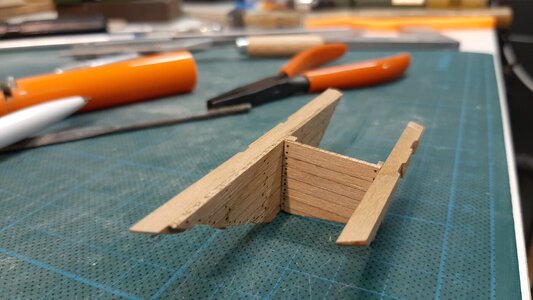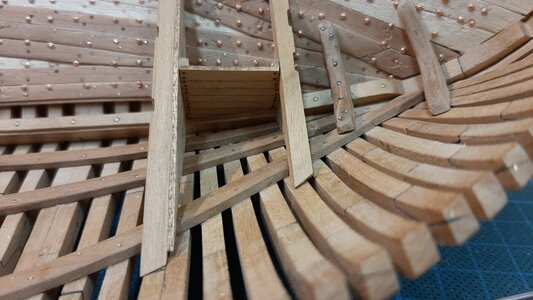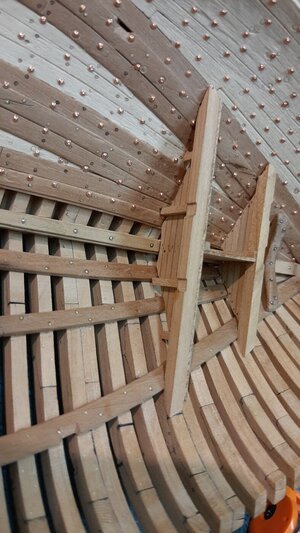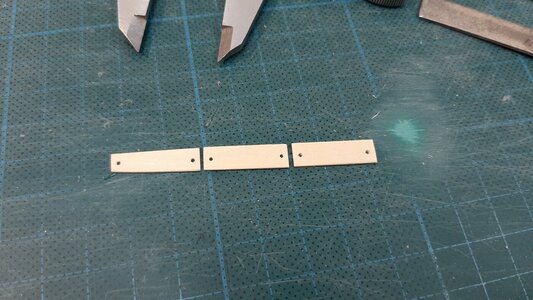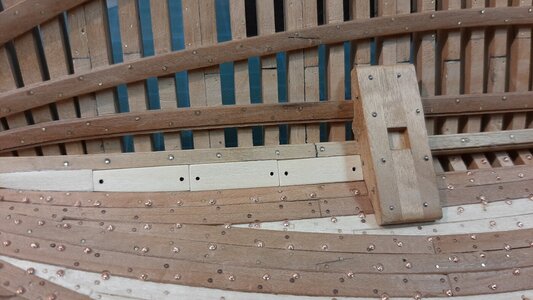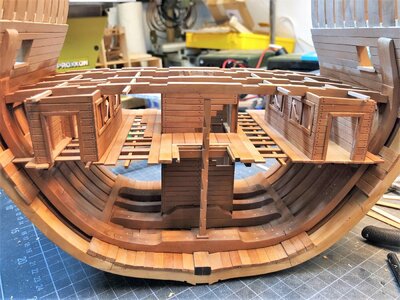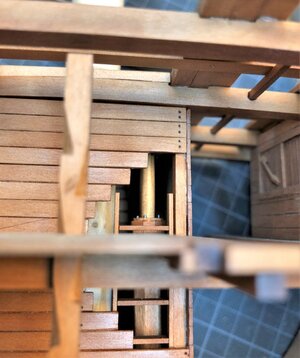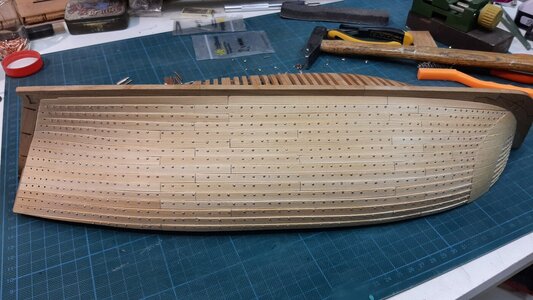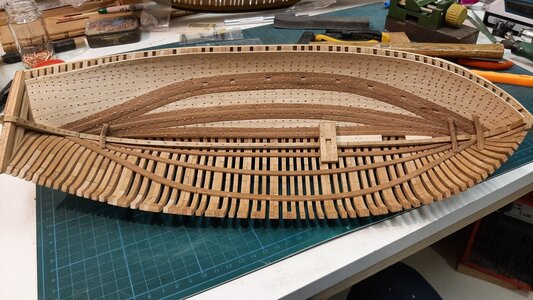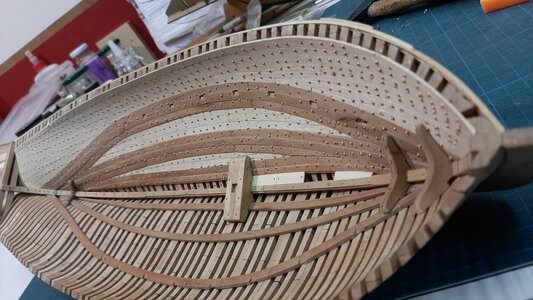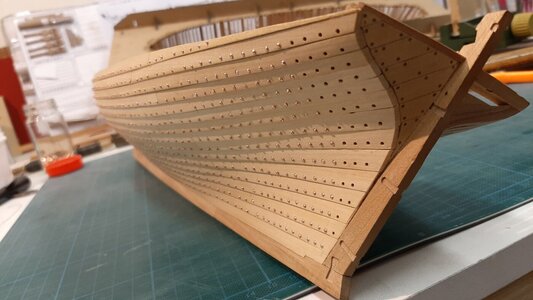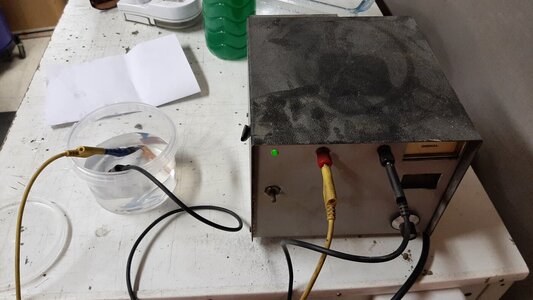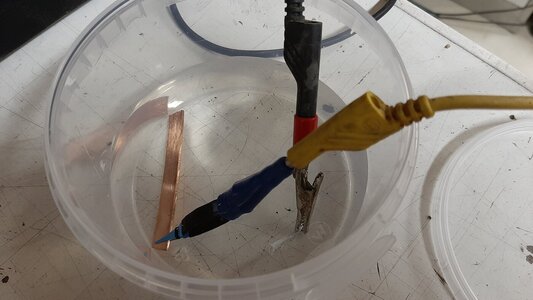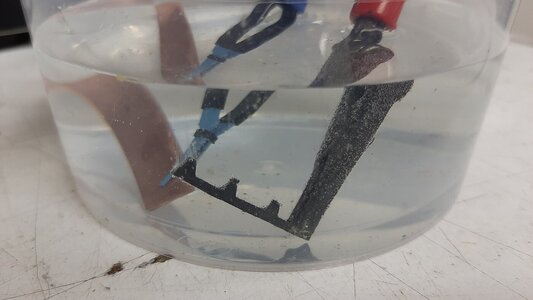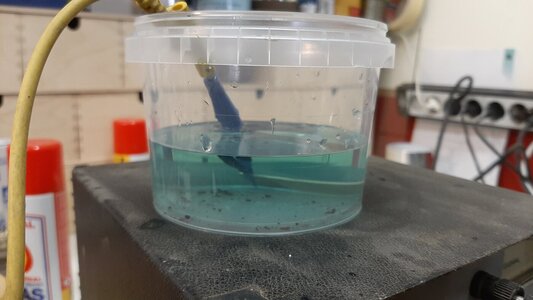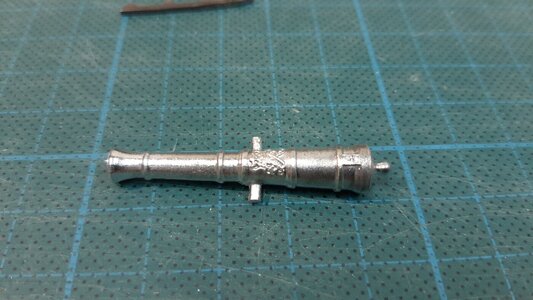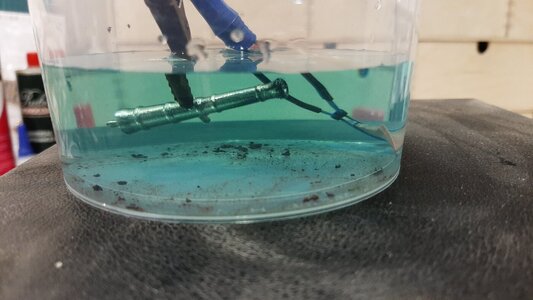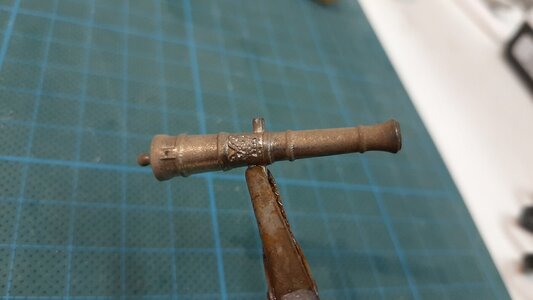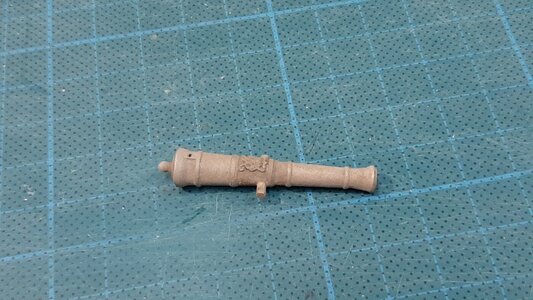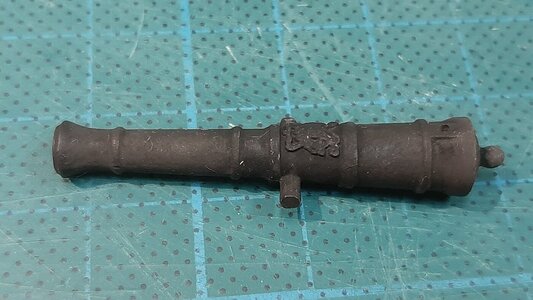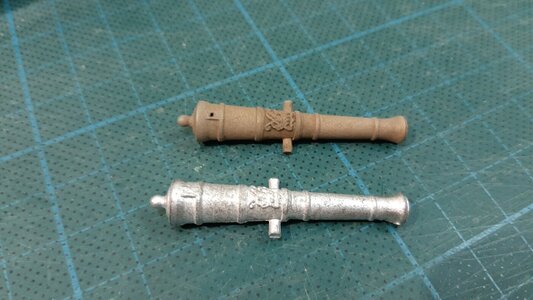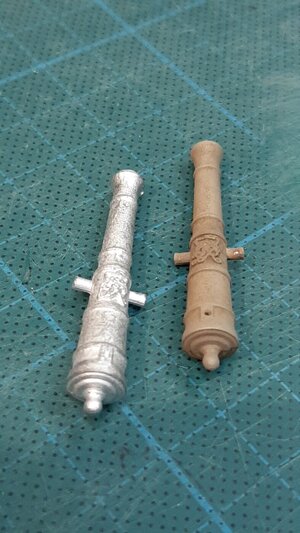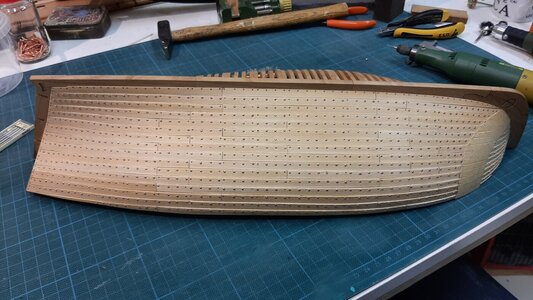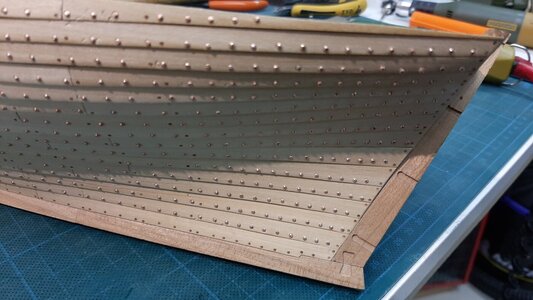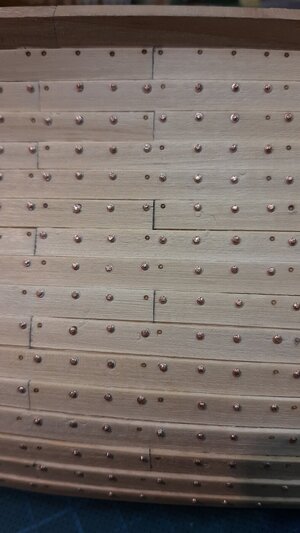In the mean time on my Alert, still bolting, uhh yes still putting in bolts.
But it is coming to an end.
View attachment 222383View attachment 222384View attachment 222385View attachment 222386
But also did something else.
I was not happy how the pewter parts were burnishing, I did some tests with it and I did not like the results.
So looking for a solution I decided to plate the pewter parts with copper as this can be burnished perfectly.
The next question is how to get a copper layer on the pewter, and that is actually quite a simple process. For this I use electrolitic copper plating which you can easily do your selve.
What do we need:
-A small piece of copper
-A DC transformer, preferrably adjustable
-Demineralized water, I use rain water as we have plenty of it.

-vinigar
What is the process:
You attach the copper to the + lead of your transformer.
You put a piece of scrap metal to the - lead.
Degrease the metall and copper properly.
Put the rain water in a plastic or glass cup.
Add some vinigar.
Now put both leads with their copper and metal plate into the fluid, not touching each other.
Set the transformer former between 4-6 volts.
View attachment 222387View attachment 222388
If the process starts you will see bubbles appearing at the metall part, this means that copper ions transfer from the copper plate towards the metall part, plating it with copper.
View attachment 222389
The part becomes black with copper.
In time the water turns blue in colour, now you are creating copper electrolite which you can use to copper plate your parts.
View attachment 222390
If you have this colour of water you are ready to start plating parts.
First clean and polish your parts, then degrease properly. I will start with a gun barrel attaching it to the - lead.
View attachment 222391
View attachment 222395
After the first 30 minutes
View attachment 222396
I wrap it of with a piece of paper and it looks like this.
View attachment 222392
Then I burnished it.
View attachment 222400
Actually I liked the coppered look more then the burnished one, so I put it again in the copper electrolite.
After 4 times this is the end result of the copper plating, the more often you do this process the thicker the layer becomes.
View attachment 222397View attachment 222398View attachment 222399
With this technique you can give your pewter a brass finish, a burnished finish or even a verdegris finish, what ever you prefer.
You can make your own brass gun barrels by means of pewter casting and copper plating them.





